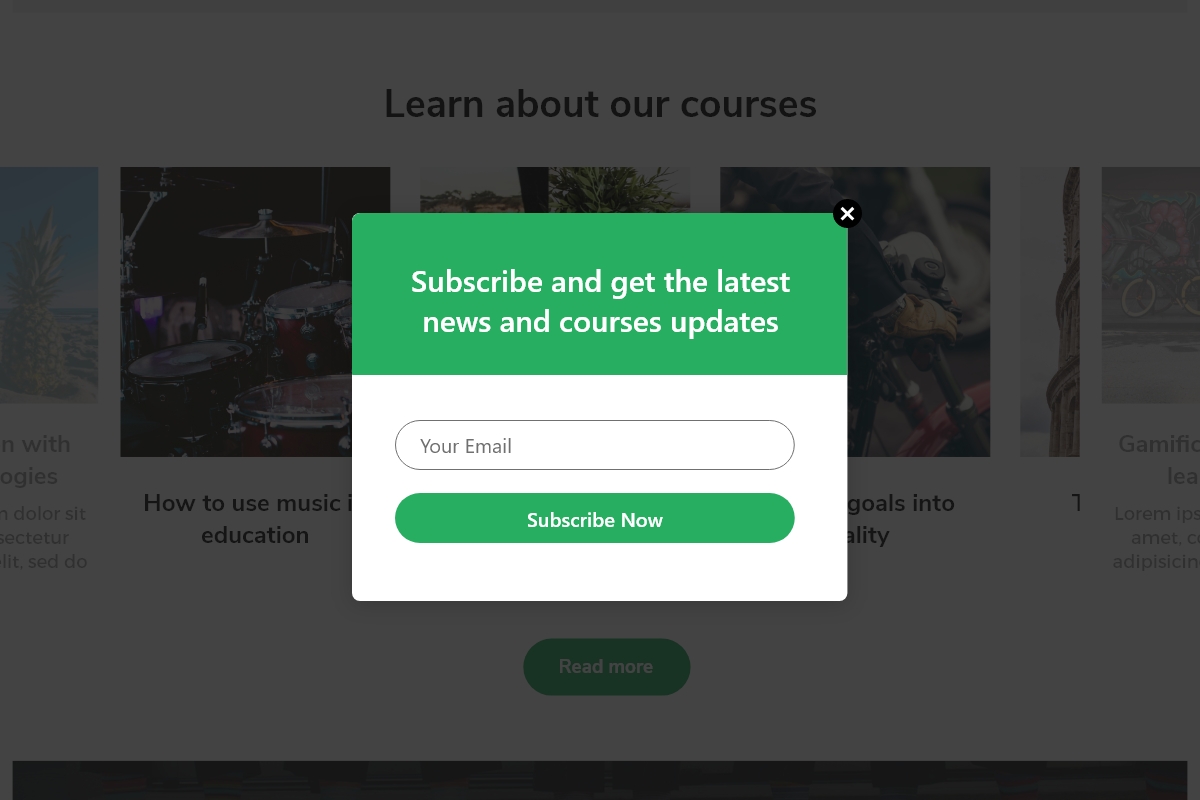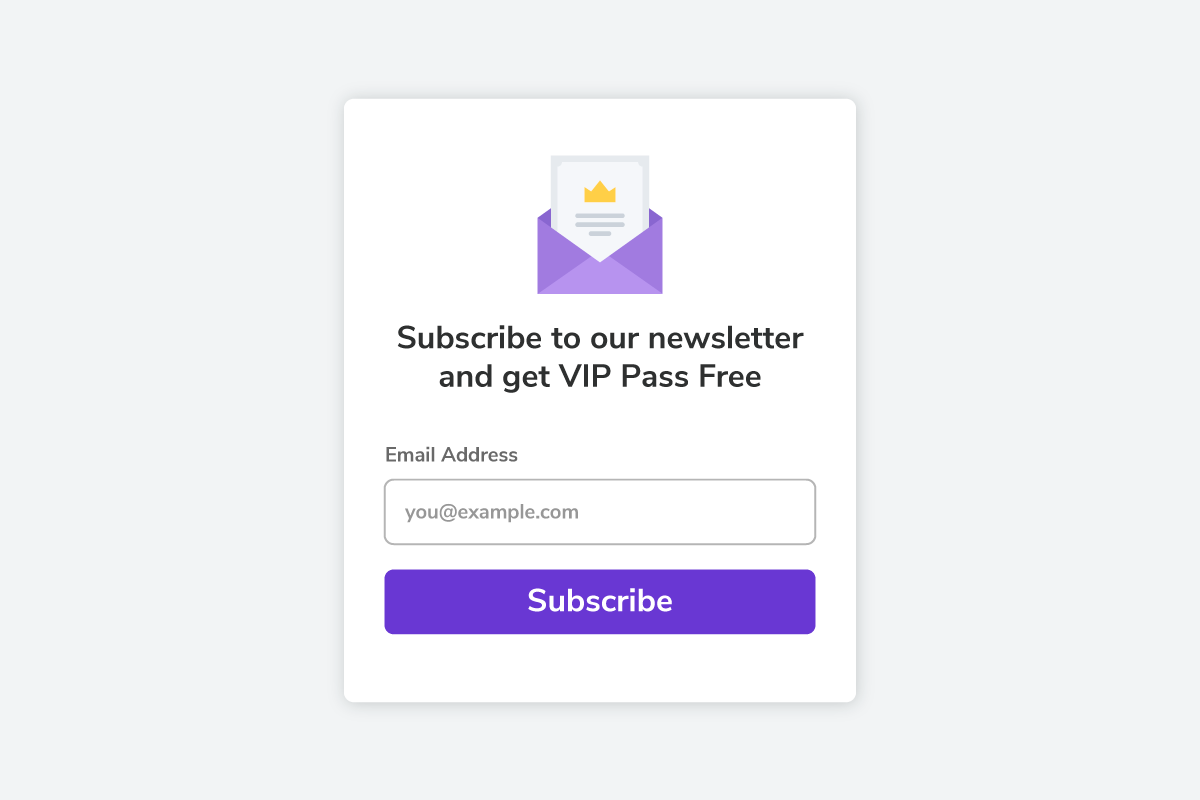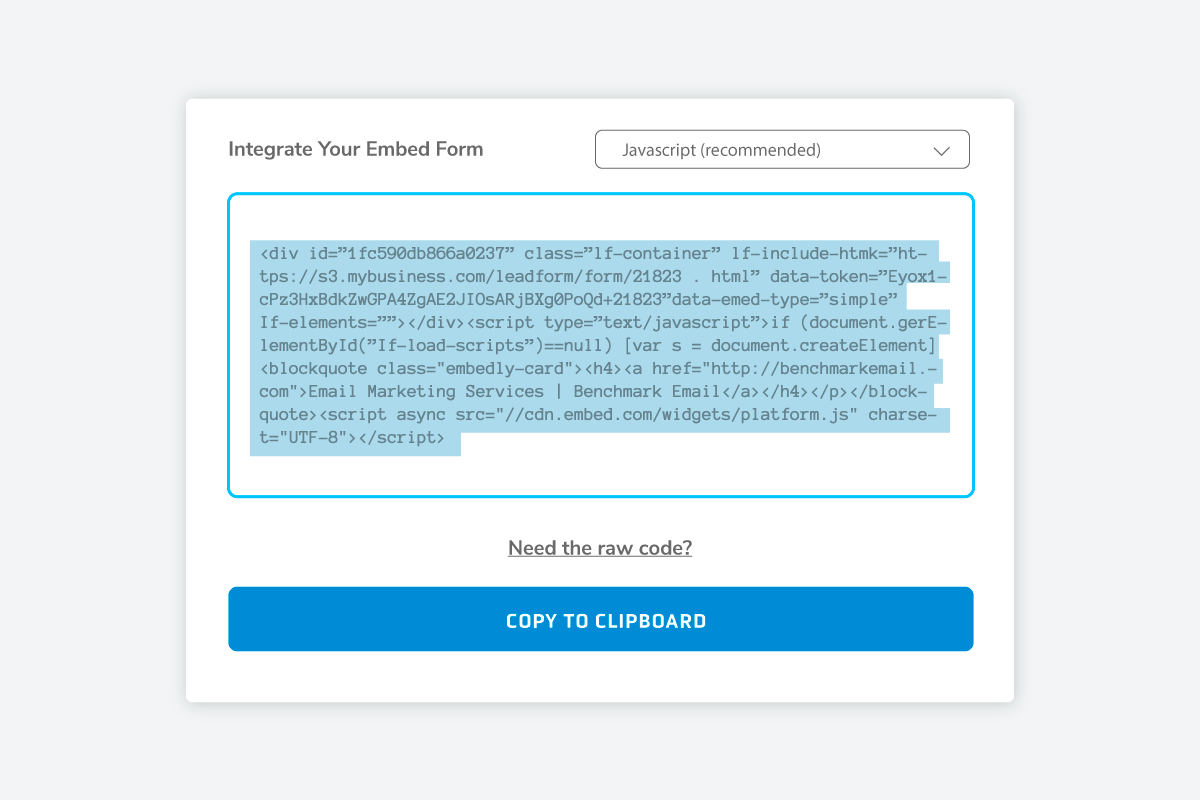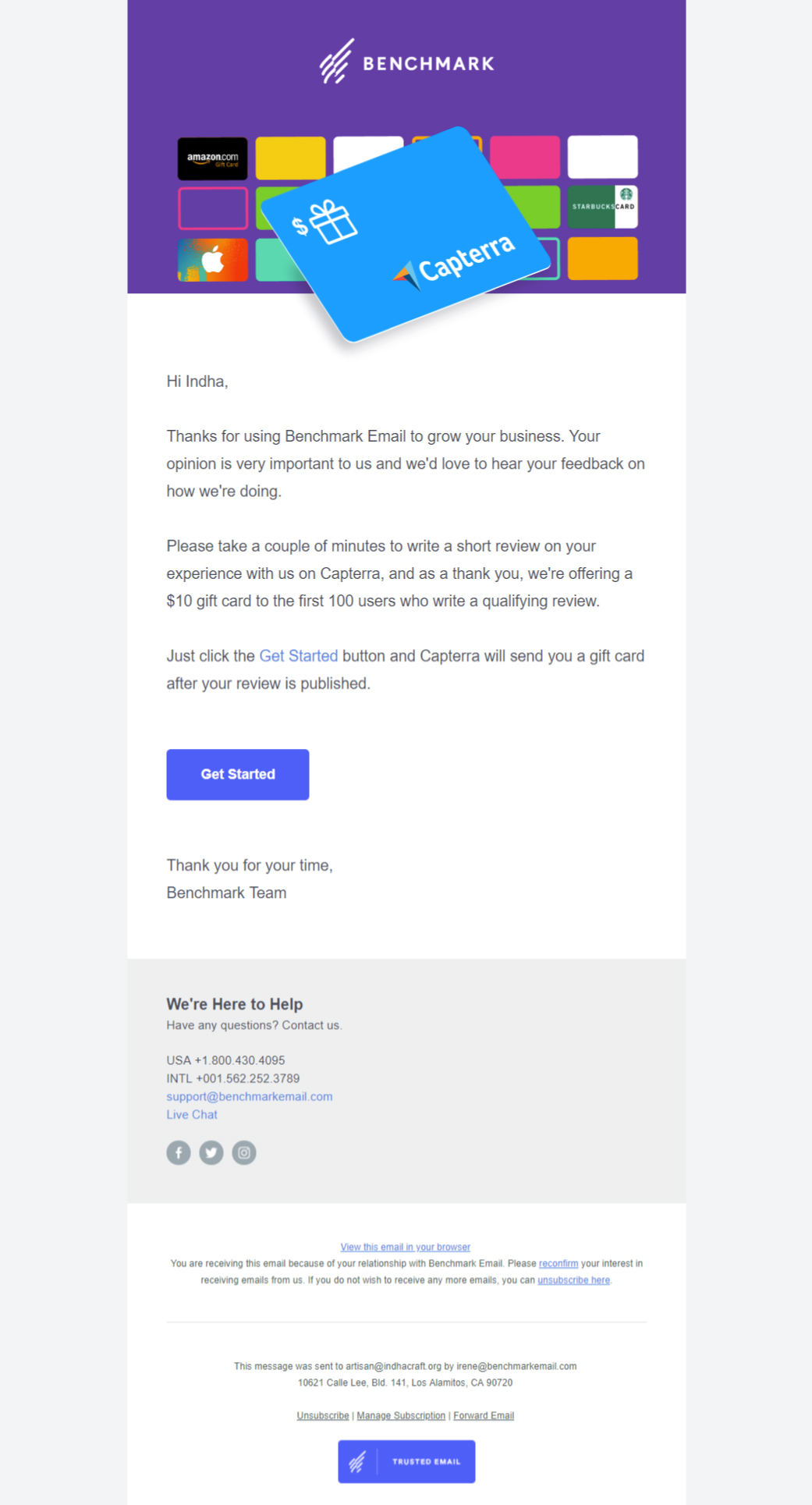A COMPLETE STEP-BY-STEP GUIDE (2020)
Getting Started with Email Marketing in Less Than One Week

Following this guide, in just 15 minutes a day for the next three days, you'll be able to build an email marketing plan that:
- Captures new leads and customers. Capitalize on the traffic coming to your website!
- Doubles your returning customers. After all, your customers are also your warmest leads.
- Brings back visitors who abandon cart. Don’t miss out on hot leads!
- Gets automated feedback from customers. Use this information to improve,
create more engagement and sell more.
That’s it! In three days (or less), you'll be well on your way to email marketing success!
Want to become an email marketing guru in one day? Tackle all of the steps on this page, and you'll be sending emails like a pro in no time.
If you need an email marketing tool, you can sign up here free. Need help? We’re here for you via phone, chat or email to answer any questions.
What is email marketing, and why is it so important?
Your email list is your most valuable asset. Email marketing allows you to spend less time and money, while getting more engagement and sales:
- The average Return On Investment (ROI) for email marketing is $38 for every $1 spent.
- Email keeps customers coming back for more! It costs five times more to attract a new customer than to keep your existing ones.
- Email is the most effective channel for generating sales according to 59% of B2B marketers.
With these six steps, you'll be on your way to growing your email list exponentially and creating a more robust, effective email marketing plan.
STEP 1: GET SIGNUPS
Generate 50% more hot leads at a one-third lower cost by nurturing leads with just a basic signup form strategy.
Your email list is your most valuable marketing asset. Even if you’re just starting out or only have a small list!
According to a study conducted by SalesForce, companies that succeed with lead nurturing create 50% more leads from customers ready to buy at a cost that is one-third lower.
It all starts with the signup form.
You have an opportunity to grow your email list at every single touchpoint with customers and leads. Here are the spots you should be placing a signup form:
- Homepage
- Blog
- Top Trafficked Website Pages
- Social Media
- Phone
- In-Store/On-Location
- Events
- Print Ads
Three Key Factors of Effective Signup Forms
Voice
The tone, or voice, that you use on your signup forms should ring true to your brand.
Your company has a personality that is uniquely yours and it should shine in your signup forms. A visitor’s interactions with your signup form should match the experience they’ll find elsewhere with your brand.
Incentive
The only reason a person will signup to receive your emails is if they believe they will get value from it.
Why should your customers and leads subscribe to your email list?
You need to understand where that person is at in the moment they see your signup form and what they need from you. Offer it in exchange for their email address.
Value, for your subscribers, can come in the form of information, savings, learning resources or even entertainment.
CTA
A clear and easy call to action is a must for any signup form.
Use action words in your signup forms. Here are some action phrases to consider:
- Yes, I Want [insert your lead magnet here]!
- Start [doing whatever your goods/services offer] Today!
- Score/Snag [your lead magnet] Now!
Additionally, create a sense of urgency by putting words like “today” and “now” to use.
What does it take to place a signup form to your website?
It’s quick and simple to put a signup form on your website. With Benchmark Email, you can have a signup form customized and published on your site within minutes!
Here’s how:
- Choose the Style of Signup Form You Want To Use: Select the type of signup form you’d like to create. The most common forms are pop-up forms and embed forms. Pop-up forms are the ones that show up automatically after a web visitor is on your page for a specific amount of time.

The embed forms can be placed in a sidebar, footer and everywhere else on your site you need!
- Design Your Signup Form: This may go without saying, but it’s important to design a signup form that matches your company’s website and style—your brand. We also recommend asking for the least amount of information necessary. In most cases, just a name and email is all you need. If you can only ask for the email address, even better! Remember, you can always ask for more information once they’ve subscribed.

- Confirmations: When someone completes your signup form, what page do they see next and what will their confirmation email say? You want to make sure you maintain a consistent user experience. Ensure the confirmation message matches the signup form and the page thanking someone for opting in is welcoming and uplifting.

- Publishing Your Signup Form: When you complete the signup form, you will be given a piece of code to place on your site.

Send this code to your web developer, and he/she’ll know where to place it. If you are building your website yourself using a service like Wix, Squarespace, Weebly, Shopify, or BigCommerce, you can place this code into their custom HTML blocks and then place the block anywhere on your site. If you are using WordPress, we have a special plugin that installs your created signup forms automatically on your site. You can learn more about the plugin here.
Want to learn more? Here are 15 ways to grow your email list.
Ready to start growing your list? Sign up free today!
STEP 2: GREET SIGNUPS
Generate 320% revenue with a simple welcome campaign.
A Welcome Email is the one email marketing strategy every single business should be using:
- On average, Welcome Emails generate 320% more revenue on a per email basis that other promo emails that are sent.
- 3x more transactions and revenue per email over regular promo emails. 4x open rate, 5x click-through rate for Welcome Emails over other email marketing campaigns.
- The average Welcome Email has a 14.4% click rate, whereas other email campaigns average 2.7%. Welcome Emails average a 50% open rate. Welcome Emails have proven to be 86% more effective than standard newsletters.
- More than half, 57.7%, of brands send Welcome Emails to their new subscribers. Subscribers who have been sent a Welcome Email average 33% more engagement with a company.
- Welcome Emails that include an offer can increase revenue by 30% per email compared to the Welcome Emails that don’t have one.
- The average conversion rate for Welcome Emails is .94%. It’s an average of .1% for a regular email campaign.
Here are 6 tips for creating highly effective Welcome Email campaigns:
- Time is of the essence. Send your Welcome Email promptly.
- Your subject line is essential. Make it clear and catchy.
- Create a warm welcome. Make your new subscribers and customers feel right at home.
- Tell people what to do. Let them know what the next steps are that they should take.
- Deliver on your promise. Your Welcome Email should contain what you said you’d send on your signup form.
- Keep it simple. It should be obvious what your subscribers should do with that email.
To learn more about how you can execute these tips yourself, and to see examples, find out more about how you can generate 320% more revenue with welcome emails.
What does it take to create a successful Welcome Email campaign?
The hardest part will be to keep your Welcome Email short!
Most people want to include too much in the first email. Keep it short and to the point, but make sure to add value. For most companies, this is the email that gets the highest open rate and engagement.
- Creating a Welcome Campaign: Depending on who you ask, they may suggest creating a welcome campaign with multiple emails. You can do that, but to keep it simple we suggest focusing on one simple email that offers a warm and helpful welcome to your new subscribers.We suggest you send a welcome campaign right away upon signup. Strike while the iron is hot! Here is an example of the welcome email we send to new users who signup to our free Starter Plan:

After many tests and iterations, here are few insights on this email example:
- We know the first thing people want to do is login. That’s why the login button is front and center, and it’s the first thing they see. What is the first thing your new subscribers want to do? Make sure that is front and center!
- Next, you’ll see our social media icons. We’ve seen that the more channels users follow us on, the more likely they are to stick around. We think this is because these users see our tips, strategies, get more involved and become more successful.
- The last thing you’ll see on this email are links to other resources. We try to change these resources every three to six months to stay fresh and always provide updated content. Remember, keep your welcome email simple and make sure it adds value to your subscribers’ experience with your brand.
Ready to create a Welcome Email to greet all your new subscribers? Sign up free today.
STEP 3: RE-ENGAGE LOST CUSTOMERS
Recapture 10% of lost sales with abandoned cart automation.
Between two and four trillion dollars are left in digital shopping carts each year, and that number is expected to rise.
That means that across the globe the cart abandonment rate is greater than 65%!
There is some good news: abandoned cart emails are opened by nearly 45% of subscribers. Additionally, of those opening the abandoned cart emails, 21% of those click to return to your website.
You can sell to those cart abandoners! Abandoned cart emails see a conversion rate of about 10%!
Even better news: you can automate your abandoned cart emails! That means you’re closing those sales that would have otherwise been lost without spending any more of your valuable time.
What can I do to bring inactive subscribers and customers back?
Second to Welcome Email automation, Abandoned Cart Email automation is one of the most common email automations.
The top reasons why people abandon cart are because of:
- Unexpected costs from shipping and taxes
- Lower price elsewhere
- Confusing or long shopping cart process
Based on this information, you can create and test abandoned cart strategies that match your business and reason(s) for cart abandonment.
Is it difficult to set up an abandoned cart email?
Not at all!
If you have an eCommerce store such as Shopify, WooCommerce, BigCommerce, etc., you can easily integrate with Benchmark Email to create an abandoned cart email within minutes.
If you don’t have an eCommerce-specific store, you can use Automation Pro and the website engagement feature to achieve an abandoned cart strategy on your website.
Here are some tips on Cart Abandonment:
- What to send? Free Shipping, Discounts and Bundles are the best way to attract visitors back to your store. Remember, the second reason visitors abandon an online shopping cart is because of unexpected costs or better price with a competitor. Test different offers and see what works best for your business.
- Timing. Wait too long to reach out and you could lose the business. Send too soon and you might not be giving a person the chance to complete the purchase and you’ll eat away at your profits. We suggest sending within a few hours of the cart abandonment. No more than 24 hours though. Either way, test different delay times and see what works best for your business.
- The abandoned cart strategy can be used for more than just retail. With website tracking, you can trigger emails to be sent based on users visiting any URL from your website. Use this strategy to get visitors back who:
- Abandoned a Webinar or Event Signup
- Abandoned a specific page on your website
- Abandoned your site without visiting a specific page
- And much more!
Learn more about automating your abandoned cart automation emails.
Are you ready to implement this strategy to capture sales before they’re lost for good? Sign up free today!
STEP 4: GET FEEDBACK FROM CUSTOMERS
Produce 25% more profit with improved customer retention with a strategy to request feedback.
Successful email marketing means doing customer-centric marketing that delivers value to your subscribers.
After all, a mere five percent uptick in customer retention can net you 25% more profit. That’s why serving the needs of your customers serves your business.
One way to know you’re succeeding is by asking for feedback. Let them tell you what they want!
Surveys and polls are built into email marketing features to help you get valuable feedback from your customers and subscribers.
Here are 6 advantages of sending surveys and polls to request feedback:
- They start a conversation. Create engagement with your subscribers and find out what they want.
- Fast and easy. It’s very simple to create and send a survey using email marketing.
- Innovative ideas. Your customers can also be one of your most valuable creative resources.
- Alleviates pressure. Surveys and polls don’t put customers on the spot the same way a phone call might.
- Gauge satisfaction. Are you doing a good enough job for your customers and subscribers? They’ll tell you!
- See immediate results. The reporting data from your surveys and polls are available in real-time, letting you track the results right away.
Pro tip: Learn more about polls, surveys and how to use them.
How can I get valuable feedback from my customers and subscribers?
Getting proper customer feedback and acting on it can mean the difference between a successful and unsuccessful company.
We recommend a two-step strategy to request feedback from customers:
- Getting Your Customers’ Overall Satisfaction Rating: Email your customer as soon as possible to request their overall service rating. Make sure to leave enough time for your customer to experience the product or service. If you have to ship a product, make sure to wait long enough for the product to arrive and for the customer to try it. Go straight to the point. From subject line to email copy, don’t try to dance around the question. Trying to add too much to this email will have your subscriber zone out and take on a “do it later” attitude (and we all know later never comes). Here are some examples of subject lines:
- Tell us about your experience with [a recently purchased product or service].
- [First Name], what do you think about [a recently purchased product or service]?
- We need your feedback! Help us create a better experience for you.
For this first feedback request email, don’t complicate things. Ask for a simple good or bad service rating. You can do this by simply adding two images with links attached to them. One of the images being a thumbs up and the other a thumbs down. You can have your customer service reach out to those who clicked on the thumbs down image and request a public review from those who clicked on the thumbs up. Set this up once and automate it for all future customers.
- Requesting the Review: Online word of mouth has a huge influence on a person’s purchasing decisions. 93 percent of buyers are influenced by reviews and testimonials. Again, keep your email and subject line simple and to the point. The more direct and easy you make the process, the more likely your subscriber will be to respond. We suggest asking for public reviews on 3rd-party sites. Having reviews on your own website is a good thing too, but you can always copy them from reviews that are hosted on 3rd-party sites. Reviews and Testimonials on other sites have more authority and validity to potential buyers. Here is an example of the feedback request email we send customers:

And here is an example of the review request we send Benchmark customers:

Ready to get feedback from your customers and subscribers? Sign up free!
STEP 5: RETAINING EXISTING CUSTOMERS
It costs 5x more to attract a new customer than to sell to existing ones, so create a long-term email marketing plan for retention.
Most people who land on this page are looking for a quick win on a short term email campaign. But if you’ve read this far, you’re probably a bit more serious about email and are interested in a long term strategy as well.
It’s far more time consuming and costly to find new customers. It’s far easier and more cost effective to sell to your existing ones.
That’s why it’s important to plan for both the short-term and the long-term with your email marketing plan.
Having a sound email marketing plan allows you to focus on the parts of your business that you love.
With a good plan in place, you can maximize your time and resources.
Campaigns like a Welcome Email can have a large impact on your sales in the short-term. It’s a great strategy right out of the gates for any email marketer.
Creating emails to keep your customers in the purchase cycle and have them coming back for more time and again will benefit your business for the long haul. These types of long-term campaigns must also be factored into your email marketing plan.
How can I create repeat business with email marketing?
Here are some ideas on keeping your subscribers, customers and leads engaged long term:
- Setup Inactivity Triggers. Set alerts for subscribers who stop opening your emails and attempt a re-engagement strategy. Get their feedback on why they aren’t opening your emails anymore.
- Customers who haven’t visited your store in a while. Send them a special email based on previous purchases or specials.
- Recurring Customers. Engage your loyal customers as often as possible. Some businesses tend to not want to bother customers who frequent their store. However, these are also subscribers who share your emails and talk about their experience with your business with others. Obviously, don’t overdo it, but test your limits with how often you can send.
- Properly Segment and Organize your Lists. Having organized and properly segmented lists allow you to send the right email to the right person at the perfect time. This will result in higher email engagement, happier customers and increase sales. Common segments to customers lists are by product categories, the amount spent and number of purchases.
In addition to the steps detailed above, here are the important parts of an email marketing plan:
- Identify your core customer. This helps you know what touchpoints you should focus on for growing your list and the types of email campaigns you should send.
- Segment your list(s). The will allow you to send targeted, relevant emails to everyone on your email list.
- Perform proper list maintenance. This step helps to ensure your emails land in the inbox and that you’re sending to the people who want to hear from you.
- Define your email marketing goals. This answers why you’re creating and sending every email.
- Create an email sending schedule. This helps you plot out when to send your holiday email campaigns, incorporate special sales and event promos and any other types of emails you can send to achieve your goals. Make sure your subscriber hear from you at least once per month!
- Build in room to improve. Using your reporting data, you’ll be able to see what is working and where you can get more of an impact from your emails.
Discover how to create and execute your email marketing plan. Ready to put your plan into action? Sign up free today!
Congratulations, you did it! 
By following these six simple steps, you're well on your way to become an email marketing expert. If you're ready to take an even deeper dive into email marketing for your business, check out our free, downloadable resources here. Happy sending!
Sign Up For Your Absolutely Free Account
No Credit Card Required